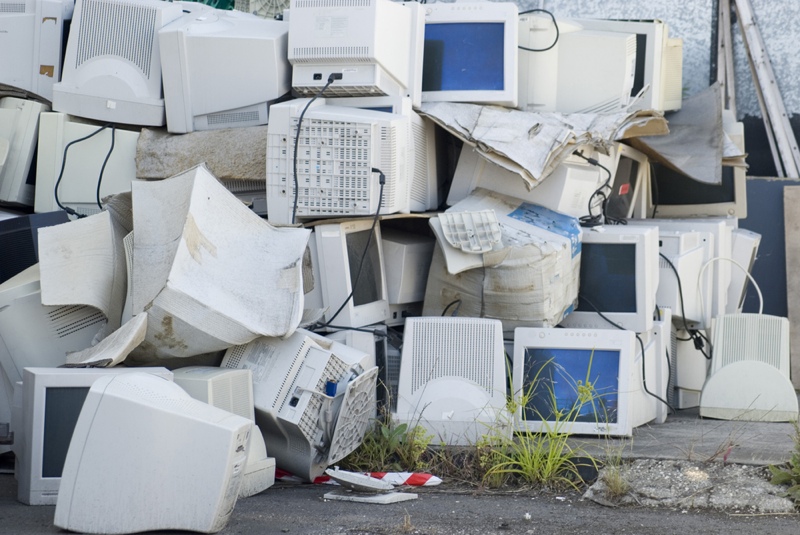World's E-Waste to Grow 33% by 2017, Says Global Report

By 2017, the global volume of discarded refrigerators, TVs, cellphones, computers, monitors and other electronic waste will weigh almost as much as 200 Empire State Buildings, a new report predicts.
The forecast, based on data gathered by United Nations organizations, governments, and nongovernment and science organizations in a partnership known as the "Solving the E-Waste Problem (StEP) Initiative," predicts e-waste generation will swell by a third in the next five years, led by the United States and China. The StEP Initiative created a map of the world's e-waste, which is available online. [Infographic: Tracking the World's E-Waste]
Until now, comprehensive data on global e-waste has been hard to come by, and countries define e-waste very differently. For example, the United States only includes consumer electronics such as TVs and computers, whereas European nations include everything that has a battery or power cord in the e-waste category.
"This is why we have developed this e-waste map. It's the first time we're introducing really comparable data," said Ruediger Kuehr of United Nations University, in Germany, and executive secretary of the StEP Initiative. "In addition, it gives magnitude to the issue on a national level, so policymakers are aware of the issue in order to take action," Kuehr told LiveScience.
Mapping worldwide e-waste
![The U.S. and China produce more total e-waste than any other country. [See full-size infographic]](https://cdn.mos.cms.futurecdn.net/jrG6dKVcVvb7xpwU7asPp9.jpg)
The interactive e-waste map shows data from 184 countries on the estimated amount of electrical and electronic equipment that hits the market and how much e-waste it ultimately generates. Having this data could help governments and companies manage their e-waste.
The world produced nearly 54 million tons (49 million metric tons) of used electrical and electronic products last year. That's an average of about 43 lbs. (20 kg), or the weight of eight bricks, for each of the 7 billion people on Earth.
Sign up for the Live Science daily newsletter now
Get the world’s most fascinating discoveries delivered straight to your inbox.
The StEP Initiative forecasts that by 2017, the world will produce about 33 percent more e-waste, or 72 million tons (65 million metric tons). That amount weighs about 11 times as much as the Great Pyramid of Giza.
China currently leads the world in production of electrical and electronic equipment. In 2012, China produced about 12.2 million tons (11.1 million metric tons), followed by the U.S. with about 11 million tons (10 million metric tons).
However, the United States eclipses China in e-waste generation, because more products previously put on the market in the U.S. are likely to be retired. In 2012, the U.S. produced about 10.4 million tons (9.4 million metric tons), versus China's 8 million tons (7.3 million metric tons).
The U.S. generated the seventh highest amount of e-waste per person — about 66 lbs. (30 kg) per capita. (The country with the highest per capita e-waste was Qatar.)
E-waste in the U.S.
The U.S. National Center for Electronics Recycling (NCER) and MIT have released a detailed report on U.S. generation, collection and export of used electronics in conjunction with the e-waste map.
The U.S. generated about 258.2 million units of used computers, monitors, TVs and cellphones in 2010, 171.4 million of which were collected for recycling, and 14.4 million were exported, according to the report. [Green Guide to Holiday Electronic Gifts (Op-Ed)]
The U.S. is a major exporter of used electronics. The U.S. exports more CRT (cathode ray tube) monitors by weight than any other product, and more cellphones than any other electronics product in terms of numbers.
However, export numbers could be an underestimate, because exporters want to keep them quiet in order to bypass restrictions or bad press, said Jason Linnell, executive director of NCER.
In terms of recycling, "We are a little bit behind compared with countries in the European Union," Linnell told LiveScience.European countries have had established e-waste recycling programs for more than 10 years, whereas only 25 U.S. states have started similar programs, Linnell said.
But recycling of e-waste is on the rise. "We're seeing more recycling programs, and a lot of states are collecting 5 to 6 lbs. (2.3 to 2.7 kg) of e-waste per person per year," he said.
"It's better than the past, but we we still have a ways to go," Linnell said.
Follow Tanya Lewis on Twitterand Google+. Follow us @livescience, Facebook& Google+. Original article on LiveScience.










